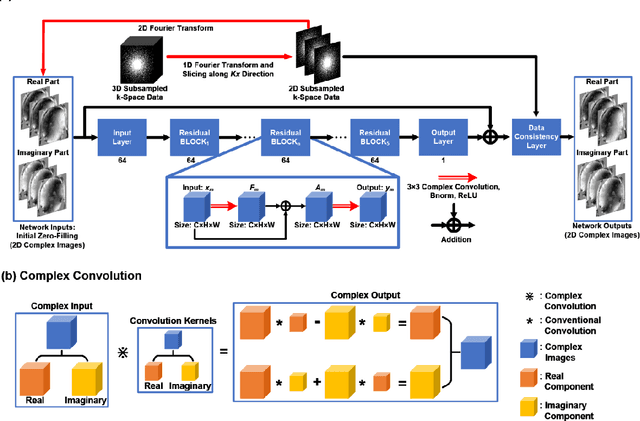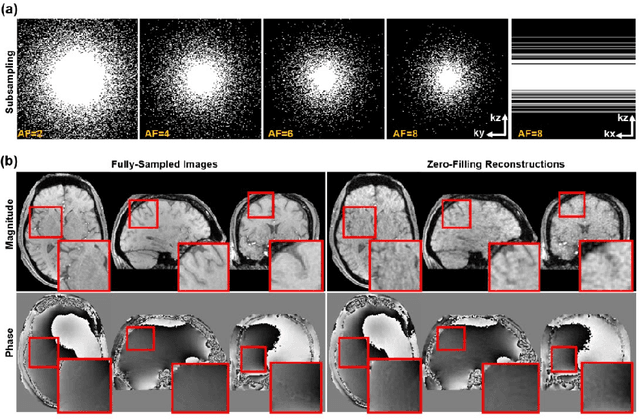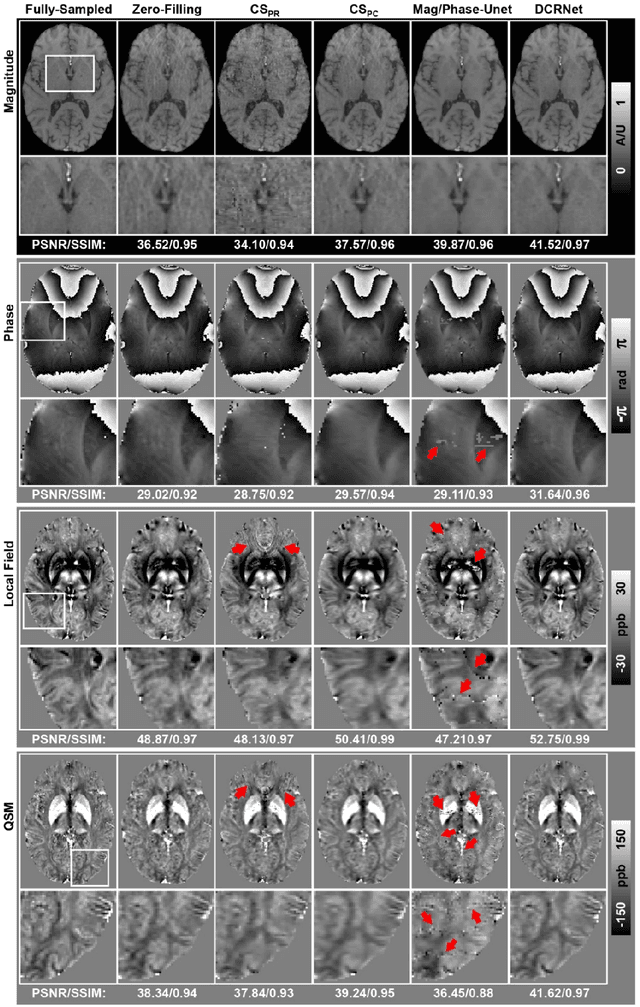Martijn Cloos
Accelerating Quantitative Susceptibility Mapping using Compressed Sensing and Deep Neural Network
Mar 17, 2021



Abstract:Quantitative susceptibility mapping (QSM) is an MRI phase-based post-processing method that quantifies tissue magnetic susceptibility distributions. However, QSM acquisitions are relatively slow, even with parallel imaging. Incoherent undersampling and compressed sensing reconstruction techniques have been used to accelerate traditional magnitude-based MRI acquisitions; however, most do not recover the full phase signal due to its non-convex nature. In this study, a learning-based Deep Complex Residual Network (DCRNet) is proposed to recover both the magnitude and phase images from incoherently undersampled data, enabling high acceleration of QSM acquisition. Magnitude, phase, and QSM results from DCRNet were compared with two iterative and one deep learning methods on retrospectively undersampled acquisitions from six healthy volunteers, one intracranial hemorrhage and one multiple sclerosis patients, as well as one prospectively undersampled healthy subject using a 7T scanner. Peak signal to noise ratio (PSNR), structural similarity (SSIM) and region-of-interest susceptibility measurements are reported for numerical comparisons. The proposed DCRNet method substantially reduced artifacts and blurring compared to the other methods and resulted in the highest PSNR and SSIM on the magnitude, phase, local field, and susceptibility maps. It led to 4.0% to 8.8% accuracy improvements in deep grey matter susceptibility than some existing methods, when the acquisition was accelerated four times. The proposed DCRNet also dramatically shortened the reconstruction time by nearly 10 thousand times for each scan, from around 80 hours using conventional approaches to only 30 seconds.
 Add to Chrome
Add to Chrome Add to Firefox
Add to Firefox Add to Edge
Add to Edge